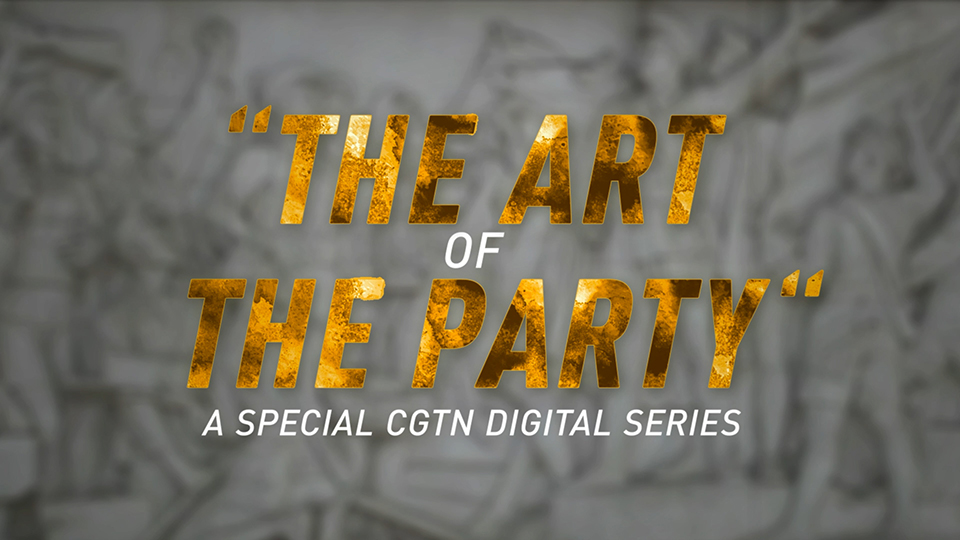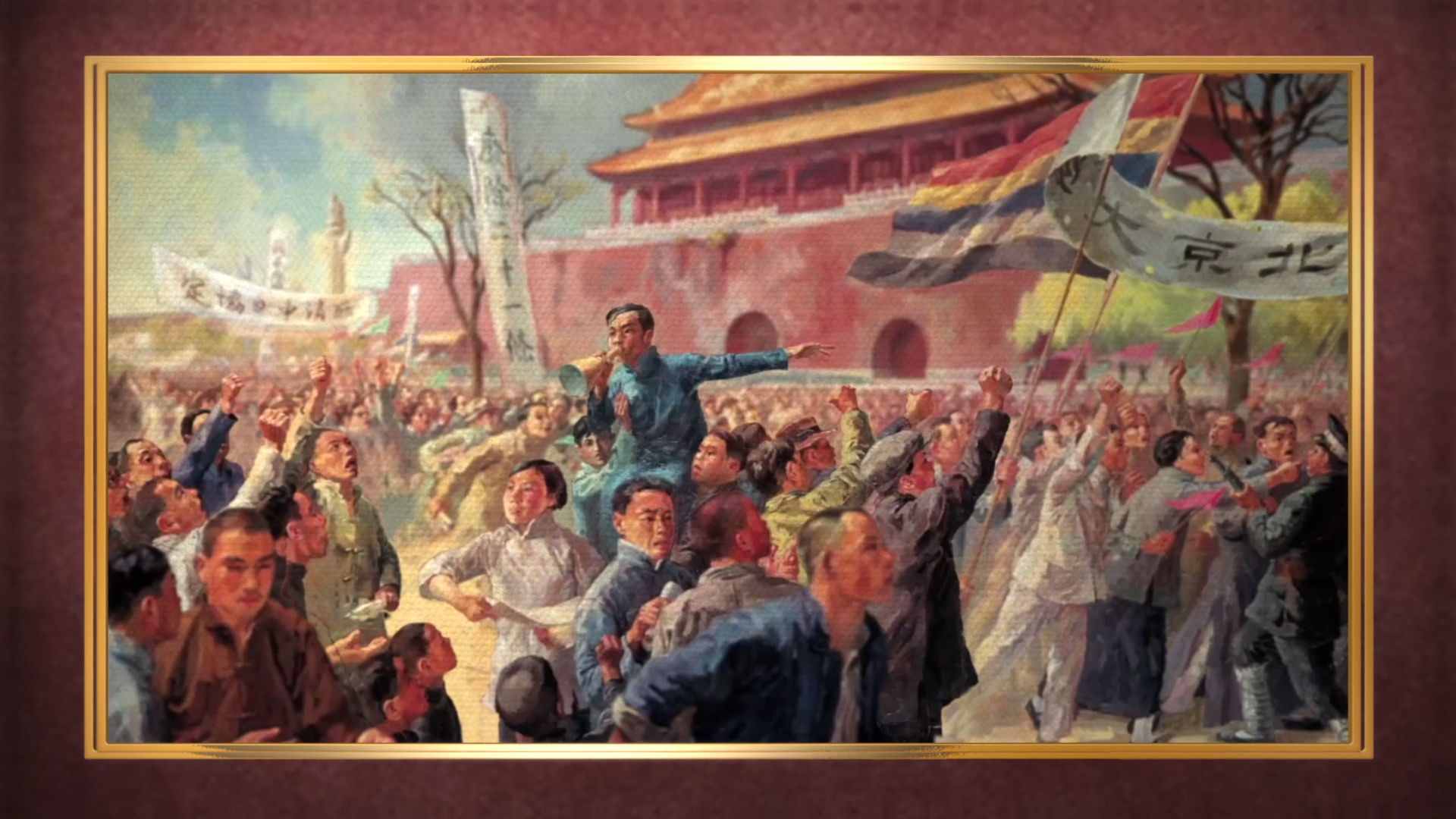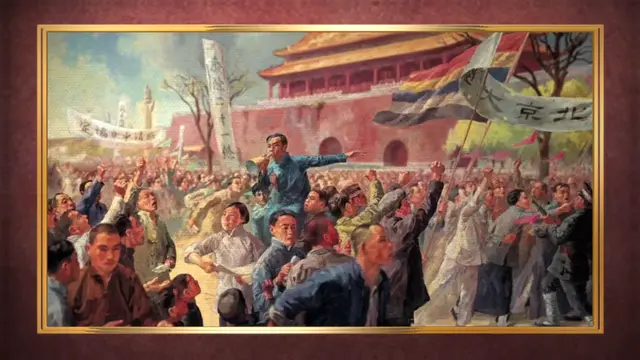00:25

"The Art of the Party" series shows you the historic moments of the Party in the run-up to the 100th anniversary of the Party's founding.
02:00

May 4, 1919 is a significantdate inChinese history. It’s the day a student protest took place in Beijing and set off what came to be known as the May Fourth Movement.
Zhou Lingzhao, a well-known Chinese artist, created a famous oil painting in 1951 entitled “May 4thMovement”, depicting that memorable event.
The painting shows a scene from May 4, 1919,when more than 3,000 students gathered in Tian’anmen Square to demonstrate against the Treaty of Versailles, which imposed losses on China and undermined the country's sovereignty after World War I.
Earlier that year, on January 18, the victorious countries held a peace conference in Paris to draw up a peace treaty with Germany.
China sent a five-member delegation, including Lu Zhengxiang, foreign minister of the Beijing government, and Gu Weijun, minister to the United States.
The Conference ceded Germany’s possessions in China’s coastal province of Shandong to Japan. It was a blow to China.
China became the only major Allied power that declined to sign the 1919 Versailles Peace Treaty.
The May 4th Movement came about because of Chinese anger over the Paris Peace Conference.
Student and worker strikes spread in many cities, including Beijing, Shanghai, Guangzhou, Nanjing and Wuhan.It turned from a student uprising in China to an intellectual and reformist movement to overthrow the old society and promote new ideas, including science, democracy and Marxism.
And, in 1921, some of the leaders of the May 4th movement became founding members of the Chinese Communist Party.
China has officially marked May 4th as Youth Day to remember the protests that gave birth to modern Chinese thought after the founding of the People’s Republic of China in 1949.
Check out
The China Report
, our new weekly newsletter.Subscribe here!
 简体中文
简体中文

